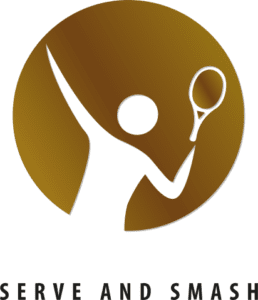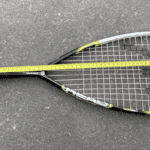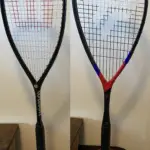This post may contain affiliate links.

Squash, padel, and tennis rackets have both much in common, but at the same time have their differences. Grips is one of those topics that confuses many people. Having gripped both my squash, padel, and tennis rackets allow me to unravel the topic of grips.
Grips are created with the same length and are used for multiple sports, such as tennis, squash, and padel. Shorter (padel) and thinner (squash) rackets need less length of the grip compared to thicker and longer rackets (tennis).
First, I will go over the functions a grip fulfills, as well as the different types of grips. Later on, you will read more about the costs and the materials that are used for grips. Therefore, let’s get a grip on those grips!
In a hurry? Feel free to jump directly to any particular section:
Functions of the grip

A squash/tennis/padel grip fulfills three main functions : holding the racket without slipping, absorbing moisture, and increasing comfort.
At first, this one-liner might seem like an advertisement for something that some people don’t even think about. However, for any player that wants to improve their game, it is worth choosing the right grip for them. But let me first elaborate on the different functions of the grip.
As the name suggests, a grip is something to hold tightly and allow you to grip it. Of course in any racket sport, this would be the handle of the racket. Imagine playing during an intense rally and just when you are swinging your racket at full force to finally hit the winner.. the racket slips out of your hand. Well, at a minimum you are probably not going to win that rally. In this article, I go into more detail regarding the squash rules around throwing or dropping your squash racket during a match.
Secondly, grips also possess absorbing qualities to complement the first function. This is because a big contributing factor to ‘racket slipping’ is sweaty hands. If the sweat remains between your gripping hand and the handle of the racket, you have a hard time holding the racket firmly. The absorbing function will reduce the moisture between your hand and the racket and thus reduce the chance of slipping.
Besides absorbing moisture, grips also reduce the shocks and increase comfort while playing. Every time you impact the ball with your racket, your arm needs to absorb the vibrations generated by the impact. Grips provide that additional cushioning between your hand and the racket frame. Besides the comfort the cushioning provides, it also reduces the strain on the joints that is produced upon impact.
Type of grips
While grips do come in many colors, they may differ in terms of their qualities. Grips can be classified as either basis/replacement grips or overgrips.
Basis/replacement grips
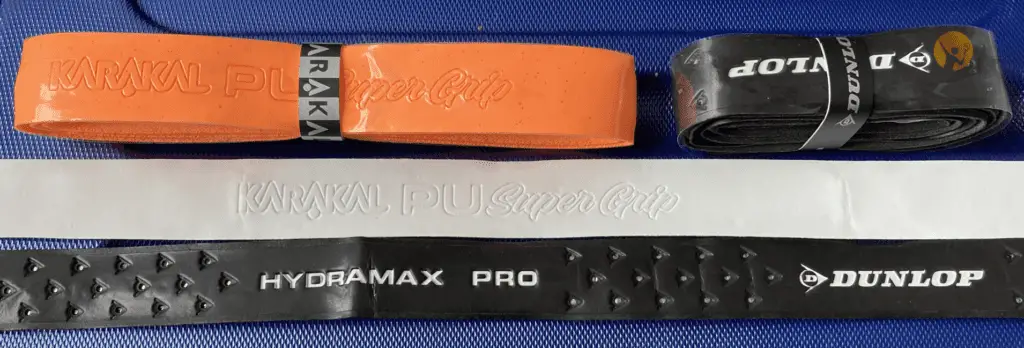
Generally speaking a basis or replacement grip is the first grip that is put on the racket handle. This provides the first wrap around your racket handle. Basis grips do come along with the racket, whereas you would use replacement grips if your basis grip is worn out. While most players use a basis/replacement grip, there are professional players that want to make the racket as light as possible and therefore remove this basis/replacement grip altogether. Another reason some professional players remove this grip is to make the width of the racket handle as small as possible, thus reducing the grip size.
Overgrips
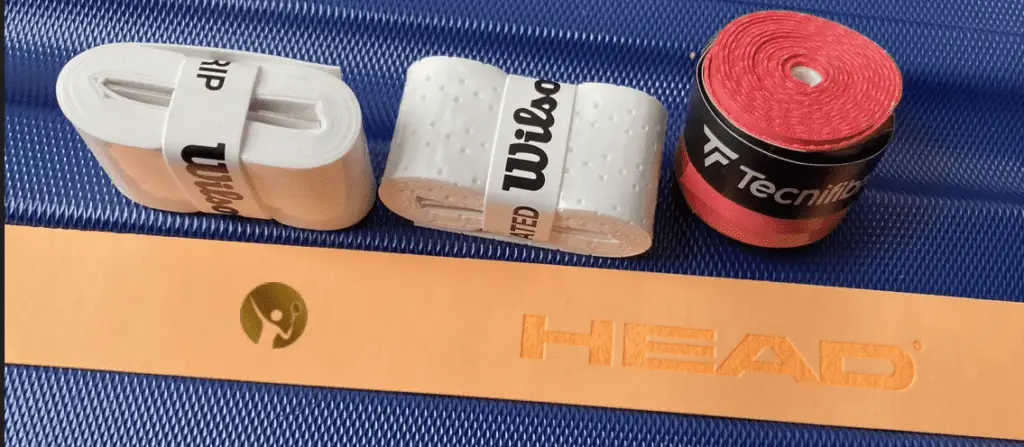
Overgrips are a thinner type of wrap that can be put on top of the basis/replacement grip to leverage the qualities that a grip provides. Overgrips are between 0.5-1.0 mm, whereas basis/replacement grips range between 2.0-2.5 mm. For example, if you want to increase your comfort and reduce vibrations, you can put on one or multiple overgrip(s). Overgrips also allow you to increase the grip size of the racket handle as well, which is why some players put multiple overgrips on top of each other. Note that adding a grip will increase the weight of your racket and lower the balance (since more weight is put on the side of the handle). Overgrips weigh approximately 10 grams, whereas basis/replacement grips weigh around 20 grams. Therefore adding this additional weight and shifting the balance is an important consideration for players that want to maximize their game. If you are looking for the optimal weight for your squash racket, check out this article.
What are grips made of?
Overgrips are made of thinner synthetic or rubber materials, whereas basis and replacement grips are usually made of multiple layers of plastic material, called polyurethane (also known as PU). Fun fact, this material is also used to insulate your freezer or fridge. Replacement or basis grips used to be made of leather, however nowadays this is hardly the case.
Since both basis/replacement grips are put directly on the handle, the bottom of the grips is adhesive. If you need to reapply the grip multiple times, it won’t stick to the handle anymore. Therefore, make sure you meticulously put this replacement grip on!
Overgrips, on the other hand, are not adhesive and can be reapplied many times over. This is of course not the case for the accompanying adhesive tape that is put at the end of the grip.
Tip: practice your regripping skills with overgrips before putting a replacement grip on
How much do grips cost?
Grips cost between $2.25 and $9, whereas replacement or basis grips are towards the higher end of the range and overgrips are towards the lower end of the price range.
Next to the fact that grips are classified as either a replacement/basis grip or overgrip, they also differ in terms of durability. There seems to be a positive correlation between price and durability, meaning more durable grips tend to be more costly. It makes sense that grips that last longer, in this case, basis/replacement grips, are also pricier. The reasoning would only stop here if you want to play once and do not care about the number of grips you would burn through in a year. You are probably looking to progress your skills, so let’s continue.
If you play three times a week, you need between 10 to 15 overgrips and one basis/replacement grip per annum, costing between $22 and $135. Therefore if you use overgrips (over your basis/replacement grip) you will end near the upper end of this range. However, if you decide to only stick to replacement/basis grips, it will hardly cost you anything.
“you might be surprised about the portion that grips take up in the total equipment costs.”
Squash grips are of course not the only cost involved while playing squash. If you are interested in the breakdown of the total cost for squash, definitely check out this article. Oh and spoiler alert… you might be surprised about the portion that grips take up in the total equipment costs.
